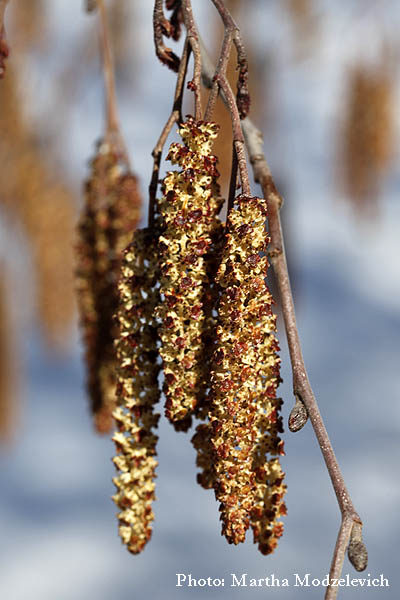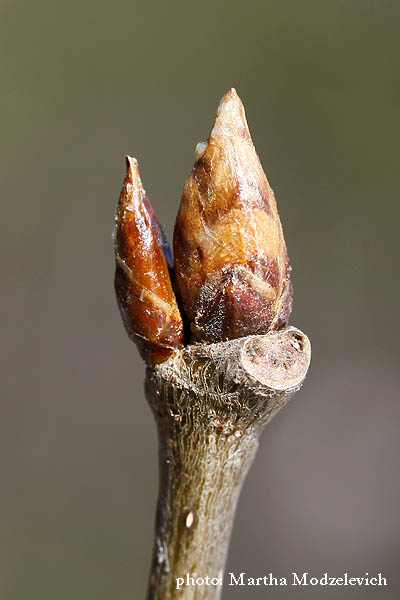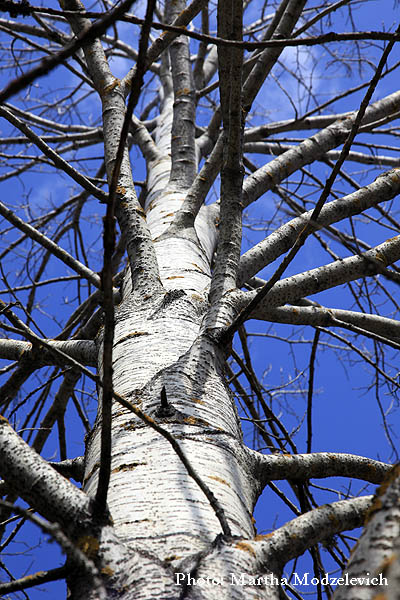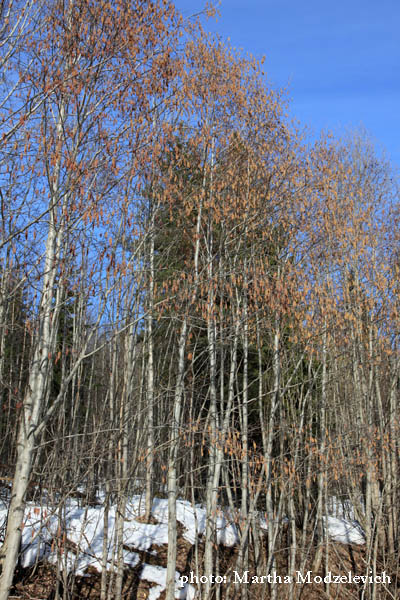
Location: Bispgården, Ragunda Kommun, Jamtlands Lan, Sweden
| Scientific name: | Populus tremula L. | |
| Swedish name: | Asp | |
| German name: | Zitter-Pappel | |
| Nederlandse naam: | Ratelpopulier | |
| English name: | Aspen, Trembling poplar | |
| Plant Family: | Salicaceae, Willow Family, Videväxter |

Location: Bispgården, Ragunda Kommun, Jamtlands Lan, Sweden |
| Life form: | Tree, dioecious | |
| Stems: | Creamy yellow pitted bark with bands of black diamonds; twigs are Slender and shiny dark brown | |
| Leaves: | Alternate nearly round, dentate leaves and a laterally flattened petiole 4-8 cm long, which allow them to tremble (the source of he scientific name). The leaves on seedlings and fast-growing stems of root sprouts are very different, heart-shaped to nearly triangular, and often much larger, up to 20 cm long; their petiole is also less flattened. | |
| Flowers: | Dioecious, wind-pollinated catkins; male: 5–10 cm long, green and brown catkins; female: 2-4 cm long green catkins | |
| Flowering Period: | April, May, before the new leaves appear | |
| Fruits: | White and fluffy | |
| Habitat: | Aspen is throughout Sweden and is one of the most common leaf trees |

Location: Bispgården, Ragunda Kommun, Jamtlands Lan, Sweden Derivation of the botanical name: Populus Latin for "poplar," derivation obscure. tremuloidestremulus, "shaking, trembling, quivering", oides -οειδεϛ suffix for nouns: like, resemble; referring to the way the leaves flutter and move in the slightest breeze.

Location: Bispgården, Ragunda Kommun, Jamtlands Lan, Sweden 
Location: Bispgården, Ragunda Kommun, Jamtlands Lan, Sweden |